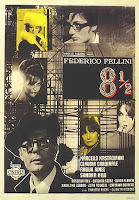Faust (EOTWS)
End Of The Week Shorts #17 extract: Faust: Apparition De Méphistophélès (1897)
This adaptation or re-enactment of a scene from the Faust legend and Goethe's 1808 book, made by the Lumière studios, is indicative of numerous things that many overlook when it concerns the early silent era. Not only does the 1897 Faust serve as an adaptation, but it implies that cinema was often used as a form of dramatisation and as a visual aid of sorts. This means that this film wasn't really supposed to be seen as a story itself, rather, it was a window into a story that audiences were assumed to already know. This may have then been narrated by people as it played out or possibly be presented as part of a wider show.
And so it is through this film, and others such as the Rip Van Winkle series produced by the Edison Studios in 1903, that we can understand the kind of storytelling that early silent films often represented; they weren't so much platforms for stories, rather aids and implications of already known stories and legends.










